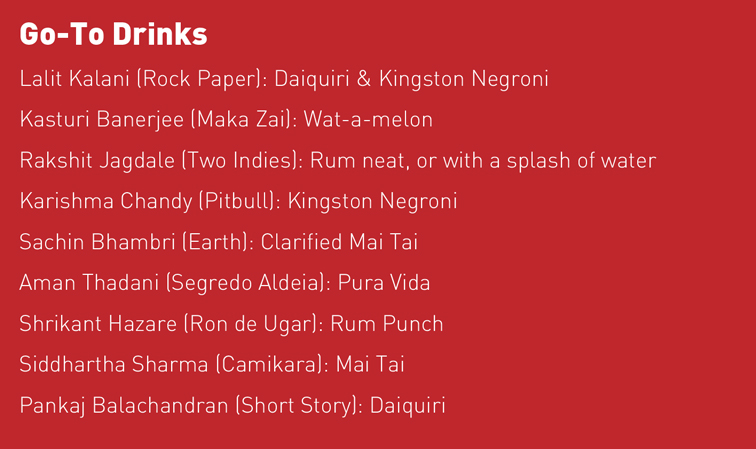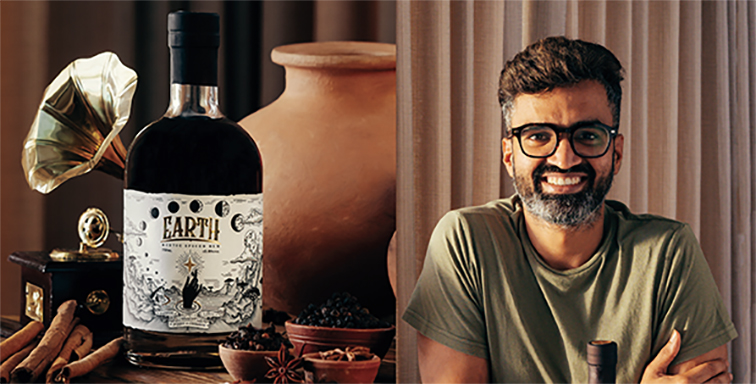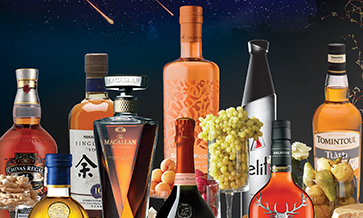Dark or white, spiced or matured, their time under the sun seems to have arrived
A rum resurgence is clearly on the way in India over the last 3 years. These rums range across types and styles: white, (Maka Zai, Segredo Aldeia, Short Story, Rock Paper and Two Indies), dark (Pitbull and Two Indies), spiced (Earth and Rock Paper), gold/ matured (Maka Zai and Ron de Ugar), and limited edition (Camikara 12-YO and Mesma).
Quite like its famed Amrut Fusion single malt, which brought together malted barley from India and Scotland, Two Indies brought together column-distilled rums from India and pot-distilled rum from the West Indies, with the added innovation that the Indian distillate is based on jaggery.
“We were distilling rum in the 1950s because it was the mainstay in the spirits market then. We market Old Port rum, which is the world’s 8th-largest selling rum by volume,” says Rakshit Jagdale, ManagingDirector of Amrut Distilleries. “We moved to the mature rum category in early 1990s and launched the Two Indies rum in 2014.”
Nearly 3 years ago, the first Indian premium rum in the shape of Maka Zai was launched, using purely indigenous distillates, molasses for its white rum and sugarcane for its gold rum.
Maka Zai (Stilldistilling) was shortly followed by Segredo Aldeia (Fullarton) with its white and coffee rums. How quickly things change in the Indian alcobev sector: We’re already viewing the two distilleries as established players in the rum market!
Their early inroads into the minds and gullets of the consumer and investment in evangelism in the on-trade have given heart to entrepreneurs and mid-sized Indian companies that decided to launch their brands into this burgeoning premium Indian spirits market, where the consumer now has a definite yen for home-grown products.
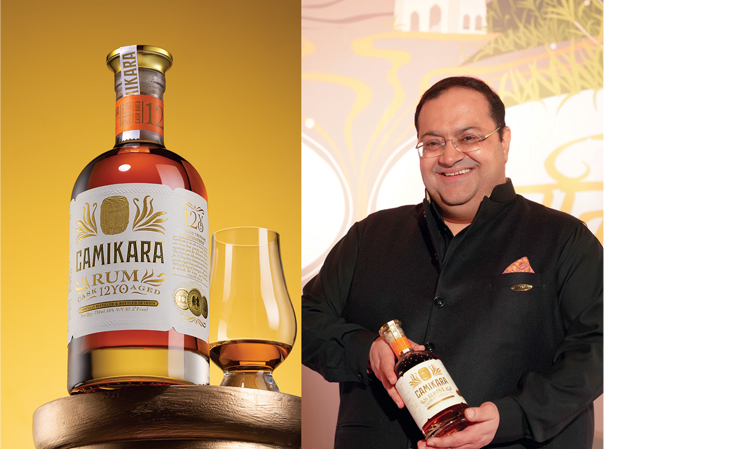
Piccadilly’s Camikara (L) is a pure sugarcane juice rum. Its promoter, Siddhartha Sharma (R), is challenging the dominance of whiskey in India.
Moving motivation
Lalit Kalani (Rock Paper) says his brand name is “inspired by the classic game of taking a chance, Rock-Paper-Scissors. It is a tribute to the risk-takers who are changing India as we know it.”
Apart from the entrepreneurial spirit, what got this new generation of entrepreneurs to venture into premium rum?
For Piccadilly, Camikara, a pure sugarcane juice rum, it was the objective of “challenging the colonial mindset that has perpetuated the dominance of whiskey in India”.
Kasturi Banerjee of Maka Zai was fascinated by the “versatility of rum”, and could sense a significant market opportunity within the premium rum category.
Karishma Chandy, after working with international and domestic brands for 15 years, says: “All marketers dream of launching a brand. Pitbull (a dark rum) is testimony to this dream!”
For Pankaj Balachandran, Brand Director of Short Story, launching the white rum was a “bridge between light Spanish style white rums in India and character-driven rums of the Caribbean”, helping the consumer to explore different rum styles.
Whatever the motivation of these individuals and companies, consumers don’t seem to be complaining: they are suddenly confronted with a plethora of choices where rum is concerned!
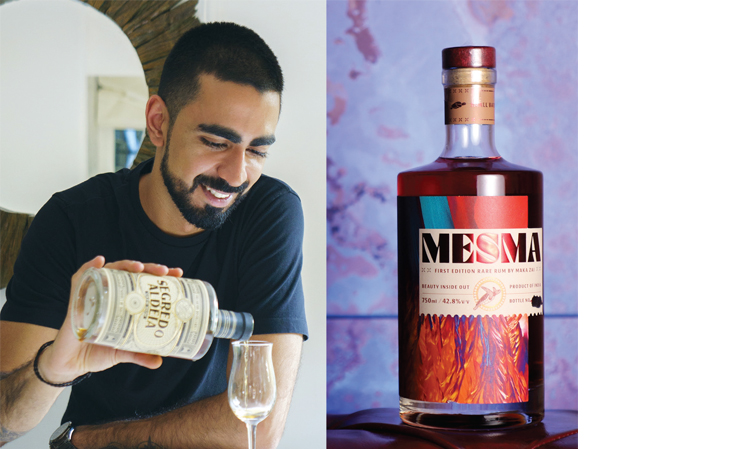
Fullarton’s Aman Thadani (L) feels his Segredo Aldeia can speak for itself. Stilldistilling sensed a significant market opportunity within the premium rum category. Its ‘Limited Edition’ Mesma rum (R) sold out within two weeks of its launch.
Premium cues
The Spirits Business Brand Champion Report for 2022, lists the top 10 selling rums in the world, and there are three Indian brands in the ranks: Contessa (1.3 million cases), Old Port (1.5 million cases), and McDowell’s #1 (8.8 million cases).
One of the biggest challenges premium rums have to face in India is breaking free of a dominant mindset that rum is cheap and dark. For premium rum to be treated seriously in India, it has to be significantly elevated as a category, and at scale.
A welcome harbinger of this rum resurgence has been the launch of Indian brands at the price of single malt whiskies, with premium cues to match the statement. The recently launched Camikara 12-YO from Haryana’s Piccadilly Distilleries (Rs 6,200) focuses on the use of sugarcane juice in its distillate.
Ron de Ugar (from Belegavi’s Ugar Sugar Works) uses five kinds of sugarcane. A single estate rum, it is blended using mature rums aged between 3 and 5 years and is positioned as a sipping rum.
Shrikant Hazare of Ugar Sugar Works says: “The blend has fruity and buttery notes due to the varieties of sugarcane. The ageing in oak barrels gives it beautiful vanilla notes.” It is surprising, however, that it has taken so long for this to happen, given that India is one of the largest producers of sugarcane in the world.
‘Limited Edition’ is also the badge carried by Mesma from Stilldistilling, produced in a batch of just 600 bottles for Rs 3,600, it sold out within two weeks of its launch. Fullarton’s Segredo Aldeia also is made from cane sugar and jaggery, as opposed to traditional molasses.
‘Single Estate’, ‘Limited Edition’, ‘Barrel-aged’ and ‘Sipping spirits’ are all sure cues that savvy rum brand owners and marketers are taking a few leaves out of whiskey’s book to elevate Indian rum far beyond nostalgia and its common perception as a cheap drink.
Siddhartha Sharma of Piccadilly envisions a future where “cane juice spirits are viewed in a new light and a wave of new-age distillers emerge as champions of Indian rum, creating a category that can rival global rums from any region”.
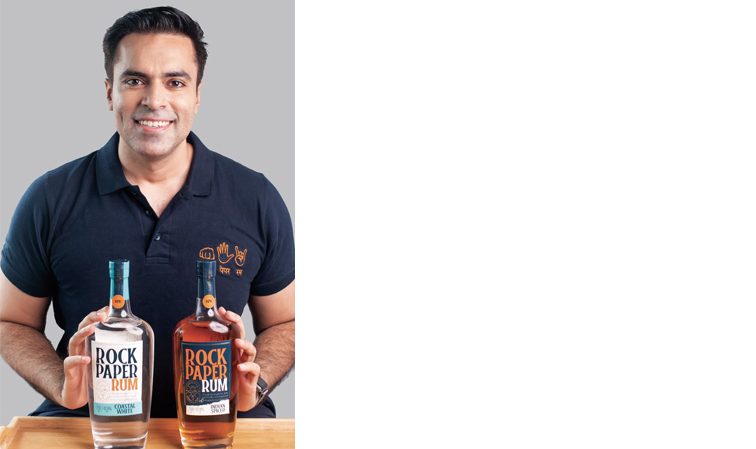
Lalit Kalani’s Rock Paper rum is inspired by the classic game of taking a chance, and a ‘tribute to the risk takers who are changing India’, he says.

Customer journey
Given the primary focus on Millennial and GenZ customers, brands have a careful balancing act to perform. On the one hand, catchy brand names, attractive packaging and story-telling are a must; but the focus needs to remain on intrinsic product benefits.
For Aman of Fullarton, Millennials represent customers that are open to experimenting and finding new things to take a liking to. Brand appeal is what he feels will draw these customers in, after which the “product can then speak for itself”.
Maka Zai’s Kasturi says, “Rum has been viewed as a non-premium dark spirit that requires a mixer and is primarily consumed by a novice drinker. All the more important, therefore, is to change this narrative via innovative packaging and design.”
White rum brands like Maka Zai, Rock Paper and Segredo Aldiea are more cocktail-forward products. But the other high-end Indian rums are focused on drinks connoisseurs and enthusiasts who would like to savour their spirits.
A case in point is Earth, a spiced rum that targets Millennial and GenZ customers. Sachin Bhambri, its founder, says the brand name celebrates the “flavours, elements and aromas provided by Mother Earth”.
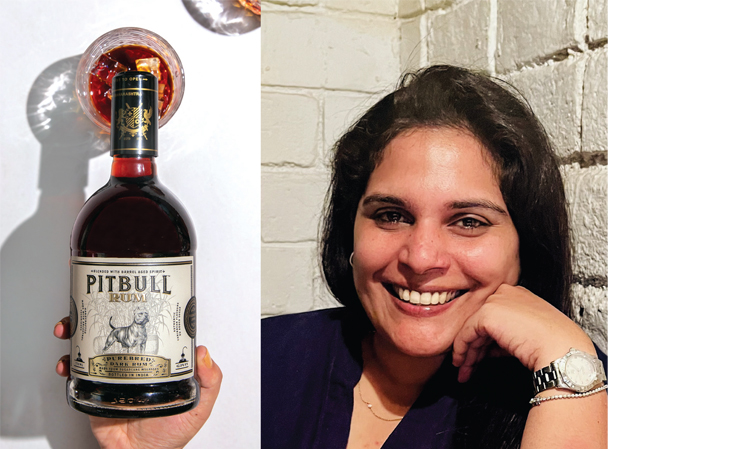
Launching Pitbull dark rum (L) is Karishma Chandy’s (R) dream come true.
Drinks strategy
The premium, aged rums are primarily styling themselves as sipping rums. This is where brand and product education kicks in, just as for a single malt. For the other rum styles and expressions, one sure way to target Millennial and GenZ customers is through cocktails and highballs, and taking a share of the throat that gin currently enjoys.
The cocktail playbook is now common across brands, especially using social media to share easy-to-make cocktail recipes and featuring interesting cocktails at events or bar takeovers. It is not, however, just simple serves that are important. More elevated expressions of the cocktail that are spirit and/or technique-forward.
Pankaj notes that, until recently, it was a challenge for rum to be embraced as an important spirit in cocktail menus, considering the limited availability of character-driven rums in India. His Short Story is actively working on changing this narrative by working closely with mixologists across top bars.
Karishma (Pitbull) teamed up with bar legend Shatbhi Basu to create rum cocktails that are both summer- and winter-centric, home-bar friendly and on-trade-focused. Maka Zai’s white rum also is dubbed as the ‘Bartender’s Edition’ and is a cocktail-focused product “packed with tropical flavours”.
Although the premium, more flavour-forward rums like Ugar, Mesma and Camikara are primarily sipping spirits, their brand owners are alive to the importance of cocktails to broaden the category.

Pankaj Balachandran (L) says Short Story is a ‘bridge’ between light Spanish style white rums and character-driven rums of the Caribbean. Ron de Ugar, a single-estate sipping rum (R), uses five kinds of sugarcane and is aged between 3 and 5 years.
Tipping point
Camikara’s younger expression is just one of a host of new rums on the way. Flavours are sure to be a hot topic, especially with the success that Bacardi has demonstrated with its Limon, which has crossed 1 million cases in sales in India.
Sachin (Earth) is not revealing the flavour but says it is his favourite and will be launching soon. We also know of the launch of at least one more citrus-flavoured rum from a company in North India.
Rum brands are building a clear portfolio of products with space for all styles and flavours. It points to rum brands’ objectives to straddle all ends of the market and consumer preferences and price points.
For Maka Zai’s Kasturi “achieving acceptance and appreciation for sipping rum, on par with the recognition enjoyed by whiskey will mark the turning point for premium rum”.
The proliferation of rum brands is sure to attract the attention of entrepreneurs active in the cocktail festival space, perhaps setting the stage for a Rum Fest – given the plethora of rums such an event would probably have equal space for rum tasting and master classes as it would have for pleasurable highballs and fantabulous cocktails.
I would love to see the flavourful rums not just confined to being sipped or savoured, but also used by bartenders to help express their creativity. Seeing rum in a territory that is now very clearly staked out by gin and agave will also help transcend the category in the consumer’s mind.
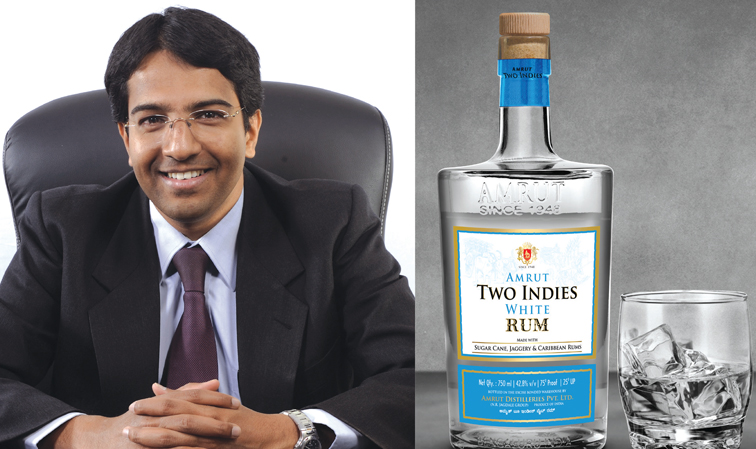
Two Indies (R) from Amrut Distilleries brings together column-distilled rums from India and pot-distilled rum from the West Indies. Rakshit Jagdale, its Managing Director (L), says Amrut has been distilling rum since the 1950s. It markets Old Port rum, which is the world’s 8th-largest selling rum by volume.
